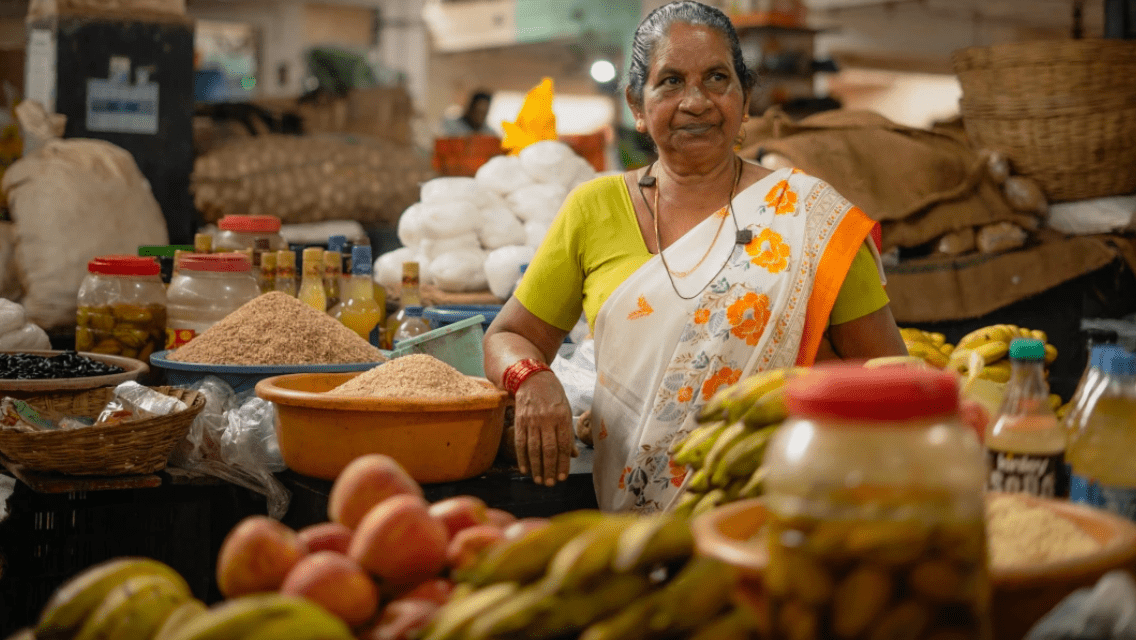Monsoon in Goa means a ban on fishing and limited seafood on your plate. That said, Goa’s rich cultural diversity and heritage are a treasure trove of culinary secrets. The state’s tropical climate and rich soil combine to produce some rare and succulent fruits and vegetables. However, a wide range of local produce doesn’t make it to the fancy restaurants or the “things you must eat in Goa” lists. They grow in Goa’s rural corners, brew in the tribal homes and flavour traditional recipes that seem to be fading away. If the foodie in you is curious to try all the flavours that represent Goa, here are 5 local Goan monsoon ingredients you did not know about.
Haldi – a popular Goan monsoon ingredient
Turmeric is a staple in the Indian spice box. It colours your food, fights bacteria and battles infections every day. However, have you ever thought about what happens with turmeric leaves? Visit Goa during the monsoons and you will have your answer. This seasonal plant can be found only between the months of June to October and make a guest appearance in almost every Goan festival. It’s primarily used to make patoleos – sweet dumplings of rice batter made with coconut and jaggery filling, wrapped in turmeric leaves and steamed. Their sweet spicy aroma is the highlight of every Goan festival during the monsoon.
Tero/Aloo
Most of us have eaten it, but struggle to find the English name for this sneaky vegetable. Another popular snack during Goa’s monsoons is the alu vadi or fritters made from Colocasia leaves. These plants grow in abundance in the state, can be found in every local market, and can even be plucked from the roadside. However, if you do not know much about what leaves are best to eat, it’s better to leave the plucking to the experts. Traditionally, it’s prepared by layering the leaves with besan, rolling it up, steaming it and then deep frying the sliced fritters. They taste best when served hot and crunchy.
Aakur/Ankur
A lesser-known locally sourced plant, the bushy marsh fern is an edible mangrove fern. It’s easily found in estuaries and swampy areas where locals go foraging in the rainy season.
What makes this vegetable unique is that sourcing it is no easy task – not only are most swamps and estuaries home to crocodiles but there is always the chance of landing in quicksand.
The best way to eat this vegetable is in a tonak or curry paired with seafood such as prawns for some additional flavour. Nothing will make it better than a hot bowl of rice.
The Kokum Fruit
Amongst all of Goa’s flavours, its tang takes the crown. Its flavour infusions are derived from the popular tamarind, raw mango and a third obscure champion – the kokum. Garcinia Indica is a fruit from the mangosteen family boasting heavy notes of sweetness and tang. It can be used in its raw, fleshy form or dried to be stored for the rest of the year. Goans used it not just in their curries, but also to make sherbets and a well-loved digestive known as sol kadhi. When you are in Goa next, don’t forget to get your hands on everything kokum.
Taikile/Tora Leaves
A wild weed that makes its appearance during the monsoons, the tora leaves or taikilo make the best pakoras. They are abundantly found on hills and slopes and are often foraged by local villagers. While it may not always make it to the main markets or restaurants, you can ask street-side vendors for their input. Apart from the pakoras, the leaves are also ground into a paste to prepare a lip-smacking chutney and its seeds are used to make Kashaya. The kashaya is a local concoction of milk and spices with plenty of nutritional benefits.
Ukde Tandul/Xitt
Rice makes up a large part of Goan cuisine. Most of the local meals include a generous portion of the local Ukde Tandul/Ukde Xitt or raw rice. This form of rice is characterised by its distinct chewy texture, unpolished brown colour and an unforgettable sweet aroma. The rice takes longer to cook but it is considered extremely beneficial to health. Along with that, what makes it unique is that it is par-bolied (i.e.) cooked with the rice husk on before being dried again. It tastes best with the local Goan coconut-based curries.
Where can you get these local Goan monsoon ingredients during the monsoon? In the markets of Mapusa and Panjim. They won’t disappoint!
